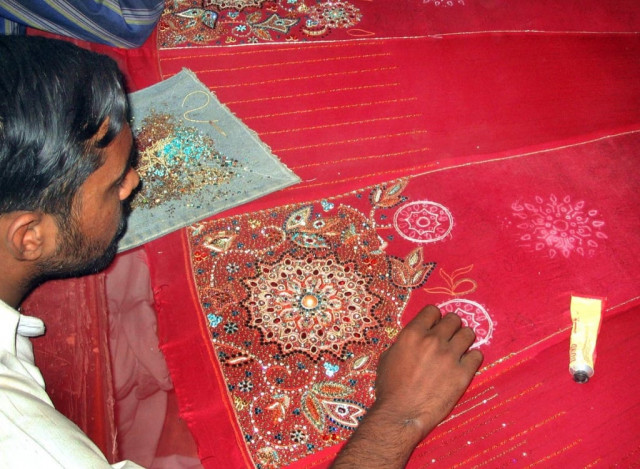Moving forward: Modern machines replace handmade embroidery
Rising purchasing power pushes for higher demand.

In the past, embroidery was done entirely by hand; due to high demand handmade tools are not sufficient to meet the growing requirements. PHOTO: APP
The art of hand embroidery practised by women is gradually being replaced by machines. For most rural women, this has been their bread and butter staying indoors.
With the rising purchasing power of the middle class that aspires to keep up with the latest fashion trends, handmade embroidery is being replaced with one made by modern machines aimed at keeping pace with the growing demand.
In the past, embroidery was done entirely by hand; due to high demand handmade tools are not sufficient to meet the growing requirements, according to people in the embroidery business in Faisalabad.
“The manual work requires hours to perform a function that a machine does in a matter of minutes,” they added.
To fulfill the high demand of embroidered cloths, many new investors have entered the business to cash in on the situation, said Sheikh Nabeel Ahmad, chief executive officer of HM Embroidery, Faisalabad.
He stated that currently only bridal pieces are being made by workers, the rest which entails causal, formal and informal party wears are manufactured through machines, he added.
“These machines are imported from China, Korea and Japan. The Chinese machines are more economical in comparison with technology from other countries,” said Ahmad.
The price of a Chinese embroidery machine is Rs3 million, while a Korean-made machine is available at Rs4 to Rs4.5 million. The Japanese machines are the most expensive, amounting to Rs12 to Rs15 million apiece, he added.
These machines are run by computers, minimising error chances during the designing stage.
He added that the designs are fed into the computers that control the machines and hundreds of suits are made on a daily basis, while the same amount of work would take a lot longer if done manually at such a large scale.
Production is not catering to demand of local markets and is being exported to Afghanistan, Bangladesh and many Muslim countries.
Published in The Express Tribune, May 15th, 2014.
Like Business on Facebook, follow @TribuneBiz on Twitter to stay informed and join in the conversation.



















COMMENTS
Comments are moderated and generally will be posted if they are on-topic and not abusive.
For more information, please see our Comments FAQ